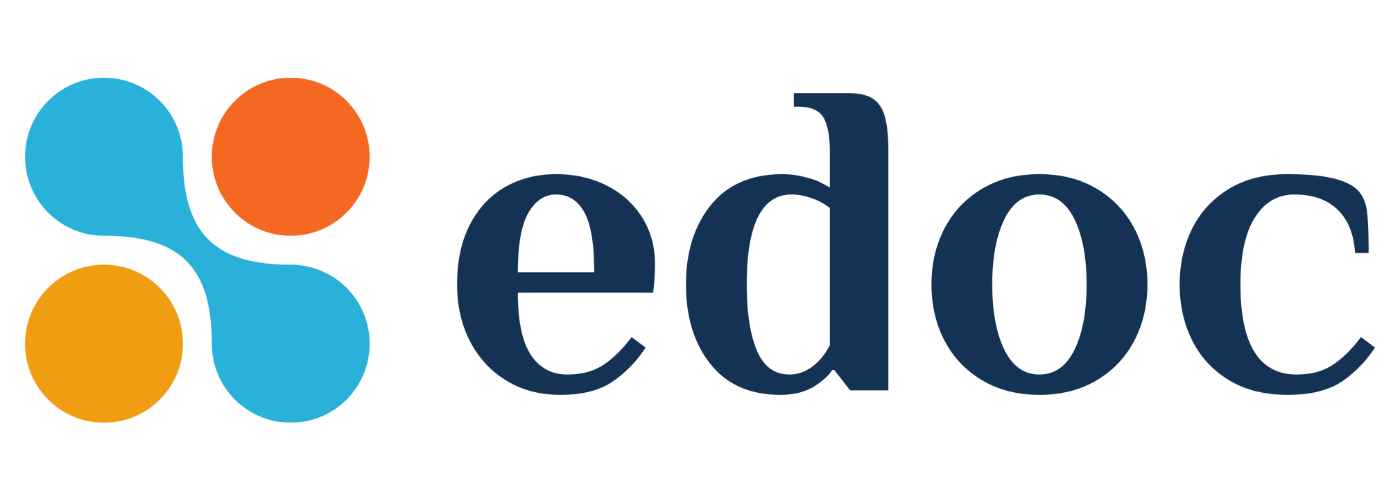Away From Keyboard
I recently emailed Tim Rettig, CEO of Intrust IT with the intention of interviewing him for the Edoc blog.
In our exchange, he mentioned how he was going to be AFK (Away From Keyboard) on a trip to Spain. Tim shared he was traveling there with a delegation of about 30 people from Cincinnati, Ohio. The group was going to visit and study the Mondragon Corporation, the largest federation of worker-owned companies in the world, employing over 70,000 people. (Intrust IT is an employee-owned IT support services and cyber security company. Edoc is proud to be a partner of Intrust IT.)
“We’re looking at things they are doing that we can bring back and adopt in Cincinnati to expand worker ownership,” Tim said to me via email, explaining it was a part of his team’s Nine Days Away From Keyboard program.
This brief exchange spurred us to talk about this idea of the Nine Days Away From Keyboard initiative. Keep reading to learn what that looks like for Intrust IT.
Resting & Recharging
This past year, Intrust IT team has taken steps to prioritize the well-being of team members, and one of the ways they’ve done that is through this initiative.
The Nine Days Away From Keyboard initiative is a program equipping team members to take a minimum of nine consecutive days off of work. For most, the nine days will consist of five days Monday through Friday, book-ended by two weekends. During this time, employees are truly “away from keyboard”—meaning they don’t access work-related email, voicemail, chat messages, or communication channels.
The idea of implementing this kind of program came from attending a Great Game of Business Conference, where leaders at Intrust IT saw the need for employees to feel comfortable taking a true break from work. A conference speaker had talked about enabling and celebrating employees for taking time off, and how that contributed to a healthier company culture, and higher employee engagement, among other benefits.
This was also another metric that the company could track, in addition to other metrics that Intrust IT monitors (and celebrates!), which the Great Game of Business refers to as “critical numbers.”
Taking a Break: What It Looks Like
For Intrust IT, a key part of this program is employee accountability. With a team of more than 65 employees, Intrust IT wants to make sure that systems will be in place so that no ball is dropped while any given person is out of the office. "It's one thing to say everybody should take nine days away from keyboard, but it's a totally different thing to actually have a list of employees, and being able to actually hold them accountable and calling out the people that aren't doing it like they're supposed to,” explained Tim. “We had one person that went on vacation, and halfway through the vacation, he started replying to emails. We called him out for working during the morning huddle,” said Tim with a smile.
The Intrust IT team has a spreadsheet where they share who has booked or planned their vacation. The spreadsheet captures who has already completed their vacation, too. It’s important to note that it’s a metric that’s celebrated by the team. The spreadsheet also serves to encourage conversation if someone hasn’t planned any sort of time off yet. “The spreadsheet can invite a discussion. It can be, ‘Hey, what's holding you back?’ It could be a personal thing holding them back,” explained Tim, or another issue that can be discussed and addressed.
Emphasis on Teamwork
One concern employees can have when they take time off is the potential for an overwhelming amount of work upon their return from that vacation. To address this issue, Intrust IT created a system, as a team, to reassign tasks while an employee is away. This step helps to prevent tasks from piling up and reducing stress when they return.
"In the past, if someone was not there, and they were gone for a week, the work could just sit there. We don’t want that to happen. We designed an automatic system that watches for that situation. Now, if somebody is set to ‘Out of Office’ in Outlook, and then a ticket gets replied to and reopened for that person, then it automatically moves it over to triage and notifies the dispatcher. As a result, the work can be picked up that way,” explained Tim.
That’s just one example of how processes have been improved, and how knowledge has been increasingly shared to support employee vacations. In turn, this has made the company stronger and healthier. And while it might not be a fit for every business, for Intrust IT, so far, the initiative has also allowed other employees to step up and take on more responsibility. This has been beneficial for team building and team development.
Refreshed & Restored
Tim emphasized that the initiative is really aimed at helping employees stay refreshed and energized in their roles. “We want to get to 100% participation. I don't know if we'll get to it or not, but we want to continue to celebrate people going on vacation,” he explained.
With more than 65 team members, Tim also said he hopes this will help in the long run to combat things like burnout. Right now, employee engagement at Intrust is the highest it’s been in years, and this initiative is part of that metric.
What Do You Think?
What do you think of a formal program like this one? Does your company do anything to encourage restoration? Or do you leave it up to individuals to carve out time for rest and rejuvenation?
We’d love to hear from you, so let us know. 